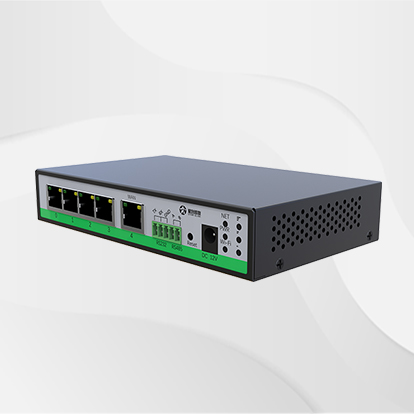SEARCH
— 葡萄酒 | 威士忌 | 白兰地 | 啤酒 —
— 葡萄酒 | 威士忌 | 白兰地 | 啤酒 —

SR600 4 Port 4G Router
In an era where almost every household has broadband, even if many people don’t know exactly what a router is, they understand that to use wireless internet at home, they need this device. As network demands have grown, broadband speeds have increased from a few megabits to hundreds of megabits and now to gigabits. Correspondingly, routers have been rapidly evolving to maximize their value. If you’re using a broadband connection of 500M or higher but still relying on a router from four or five years ago or even just a couple of years ago, you might need to consider an upgrade. If you’re interested in home router usage and recommendations, we’ll dedicate an article to that topic. Today, let’s discuss a lesser-known aspect of IoT: the differences between routers and industrial-grade routers.
Many people may not have heard of industrial routers. It’s important to note that industrial routers differ from the enterprise routers commonly seen. The fundamental distinction is that enterprise routers serve people or the devices they use, while industrial routers are wireless communication devices used in the Internet of Things (IoT). Industrial routers are widely applied in sectors such as transportation, ceremonies, finance, water conservancy, environmental protection, industrial automation, healthcare, agriculture, oil, smart homes, and more.
Industrial-grade routers are more stable, perform better, and have superior endurance compared to home routers. They are built to withstand harsh environments and can operate continuously without power interruptions. Typically, home routers can handle temperatures between -10°C to 50°C, whereas industrial-grade routers can operate in temperatures ranging from -40°C to 70°C, even in extremely cold conditions. Additionally, home routers have relatively low security levels. Industrial-grade routers, on the other hand, are designed for critical tasks, so they offer larger bandwidths, faster response times, and stronger firewalls, VPNs, and electrostatic protection.
To illustrate these points, let’s look at some parameter references using the SR800 5G industrial-grade router as an example. Detailed parameters are shown in the image below:
In an era where almost every household has broadband, even if many people don’t know exactly what a router is, they understand that to use wireless internet at home, they need this device. As network demands have grown, broadband speeds have increased from a few megabits to hundreds of megabits and now to gigabits. Correspondingly, routers have been rapidly evolving to maximize their value. If you’re using a broadband connection of 500M or higher but still relying on a router from four or five years ago or even just a couple of years ago, you might need to consider an upgrade. If you’re interested in home router usage and recommendations, we’ll dedicate an article to that topic. Today, let’s discuss a lesser-known aspect of IoT: the differences between routers and industrial-grade routers.
Many people may not have heard of industrial routers. It’s important to note that industrial routers differ from the enterprise routers commonly seen. The fundamental distinction is that enterprise routers serve people or the devices they use, while industrial routers are wireless communication devices used in the Internet of Things (IoT). Industrial routers are widely applied in sectors such as transportation, ceremonies, finance, water conservancy, environmental protection, industrial automation, healthcare, agriculture, oil, smart homes, and more.
Industrial-grade routers are more stable, perform better, and have superior endurance compared to home routers. They are built to withstand harsh environments and can operate continuously without power interruptions. Typically, home routers can handle temperatures between -10°C to 50°C, whereas industrial-grade routers can operate in temperatures ranging from -40°C to 70°C, even in extremely cold conditions. Additionally, home routers have relatively low security levels. Industrial-grade routers, on the other hand, are designed for critical tasks, so they offer larger bandwidths, faster response times, and stronger firewalls, VPNs, and electrostatic protection.
To illustrate these points, let’s look at some parameter references using the SR800 5G industrial-grade router as an example. Detailed parameters are shown in the image below:
Today, let's talk about common network faults and troubleshooting strategies that network engineers encounter in their daily work. The six faults mentioned next are undoubtedly familiar to everyone. If you can resolve them, congratulations, you ar...
View detailsData Transfer Units (DTUs) are the unsung heroes of the Industrial Internet of Things (IIoT). These compact devices work tirelessly behind the scenes, ensuring data from industrial equipment is securely and reliably transmitted to the cloud or oth...
View detailsAnalog and digital signals are the two types of external inputs that PLCs can directly accept. Digital signals primarily refer to inputs from various switches and buttons, while analog signals come from various sensors such as temperature, pressur...
View detailsExplore the benefits and applications of industrial 4G routers with SIM slots in various industrial scenarios, including flexible deployment, network reliability, remote management, and edge computing capabilities.
View detailsMo